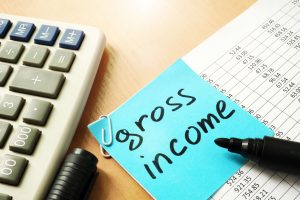
A balance sheet explains the financial position of a company at a specific point in time. As opposed to an income statement which reports financial information over a period of time, a balance sheet is used to determine the health of a company on a specific day. In this example, Apple’s total assets of $323.8 billion is segregated towards the top of the report.
A company’s equity, which is also referred to as shareholders’ equity, is used in fundamental analysis to determine its net worth. This equity represents the net value of a company, or the amount of money left over for shareholders if all assets were liquidated and all debts repaid. Equity is used as capital raised by a company, which is then used to purchase assets, invest in projects, and fund operations. A firm typically can raise capital by issuing debt (in the form of a loan or via bonds) or equity (by selling stock).
How Is Equity Calculated?
Non-current assets also can be intangible possessions, such as goodwill and patent. Though these assets are not bodily, they are often the resource that can create or break a company- the value of a product name. Current assets have a duration of one year or less, meaning one can convert them easily into cash. Such asset categorized contains cash and cash equivalents, accounts receivable, and record. Along with the equity bank or asset brought into the company and its retained earnings. Every trade will generally need balance sheets through applying for loans or awards, submitting taxes, or looking for potential investors.
If you are a shareholder of a company or a potential investor, it is important to understand how the balance sheet is structured, how to read one, and the basics of how to analyze it. Get instant access to video lessons taught by experienced investment bankers. Learn financial statement modeling, DCF, M&A, LBO, Comps and Excel shortcuts. Commercial paper is a form of short-term debt with a specific purpose that is different from long-term debt. In fact, the 3-statement model of Apple we build in our Financial Statement Modeling (FSM) course treats the commercial paper like a revolving credit facility (i.e. the “revolver”).
Asset Types and Their Impact
Select the amount of a corporation’s total liabilities on its balance sheet. However, one capitalizes these in the corporation along with salaries that a business accumulates total equity formula from its operations. Business with a larger portion of equity likened to liabilities typically has a lower risk of insolvency of its inferior debt burden.

By analyzing the balance sheet, stakeholders can gain insights into the company’s ability to meet its financial obligations and assess its overall financial health. Shareholder equity (SE) is a company’s net worth and it is equal to the total dollar amount that would be returned to the shareholders if the company must be liquidated and all its debts are paid off. Thus, shareholder equity is equal to a company’s total assets minus its total liabilities. Private equity generally refers to such an evaluation of companies that are not publicly traded.
What is owner’s equity and how to calculate it?
While there are exceptions – e.g. dividend recapitalization – if a company’s shareholders’ equity remains negative and continues to trend downward, it is a sign that the company could soon face insolvency. Shareholders’ equity is the residual claims on the company’s assets belonging to the company’s owners once all liabilities have been paid down. Investors contribute their share of paid-in capital as stockholders, which is the basic source of total stockholders’ equity. The amount of paid-in capital from an investor is a factor in determining his/her ownership percentage. Retained earnings are a company’s net income from operations and other business activities retained by the company as additional equity capital. They represent returns on total stockholders’ equity reinvested back into the company.
It can be looked at on its own and in conjunction with other statements like the income statement and cash flow statement to get a full picture of a company’s health. An analyst can generally use the balance sheet to calculate a lot of financial ratios that help determine how well a company is performing, https://www.bookstime.com/ how liquid or solvent a company is, and how efficient it is. Balance sheets, like all financial statements, will have minor differences between organizations and industries. However, there are several “buckets” and line items that are almost always included in common balance sheets.
